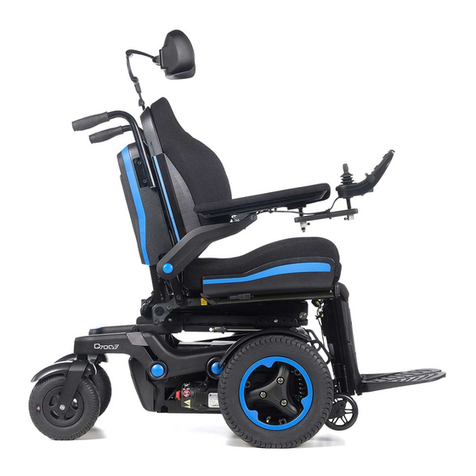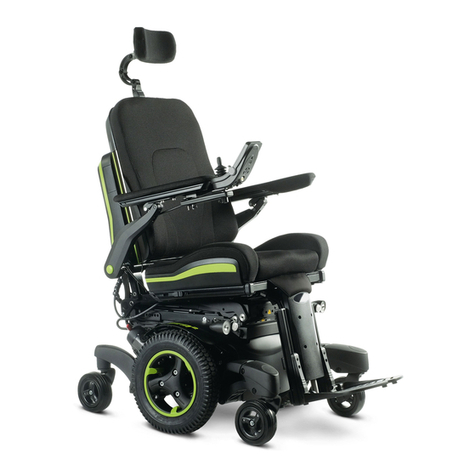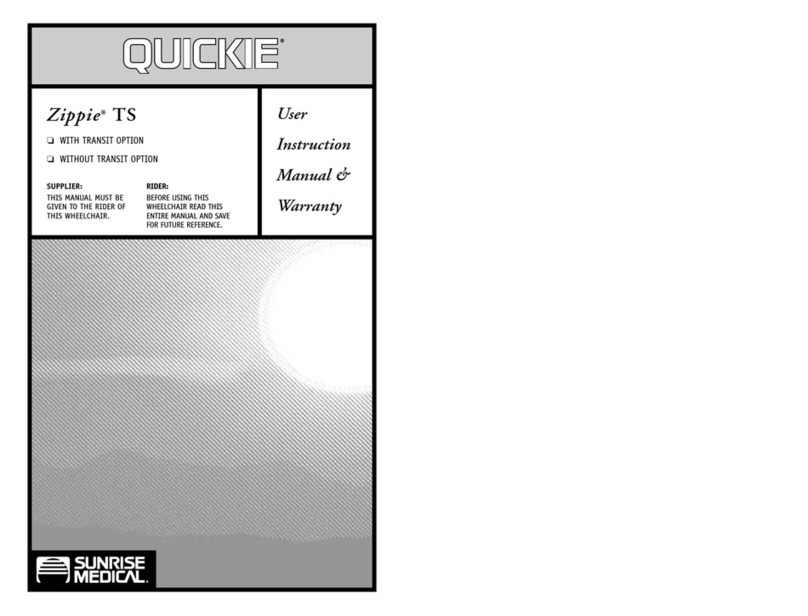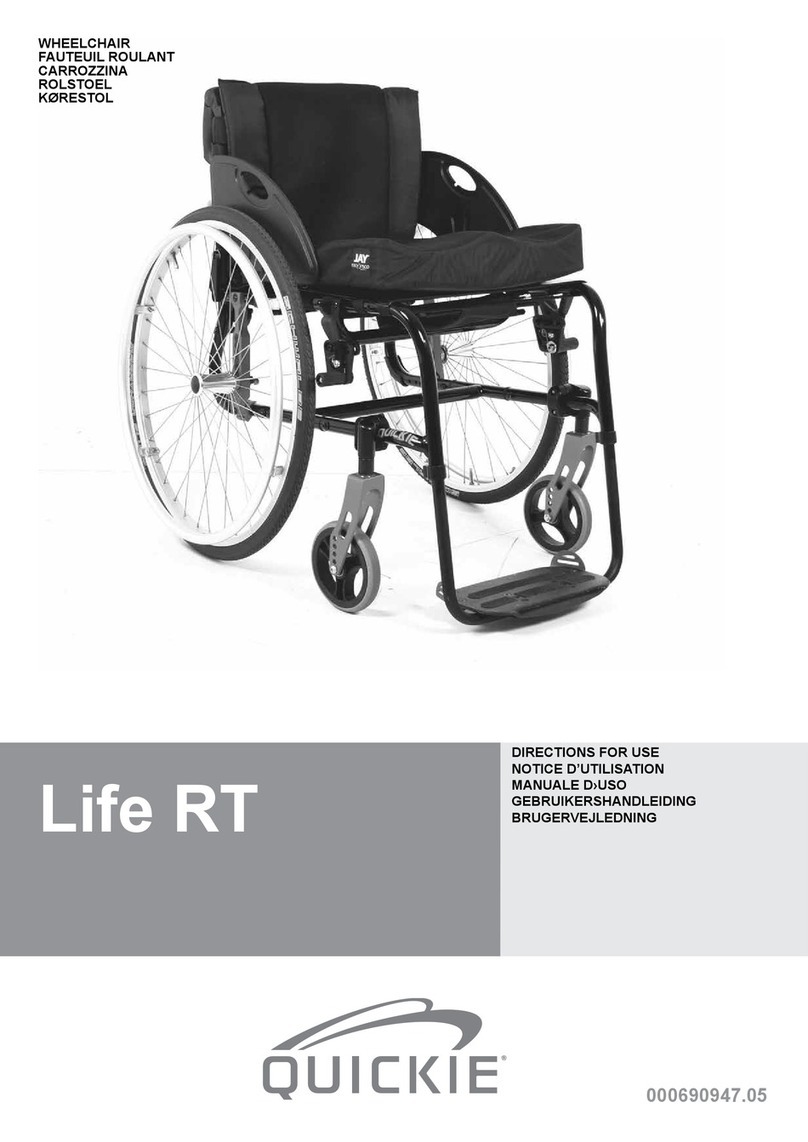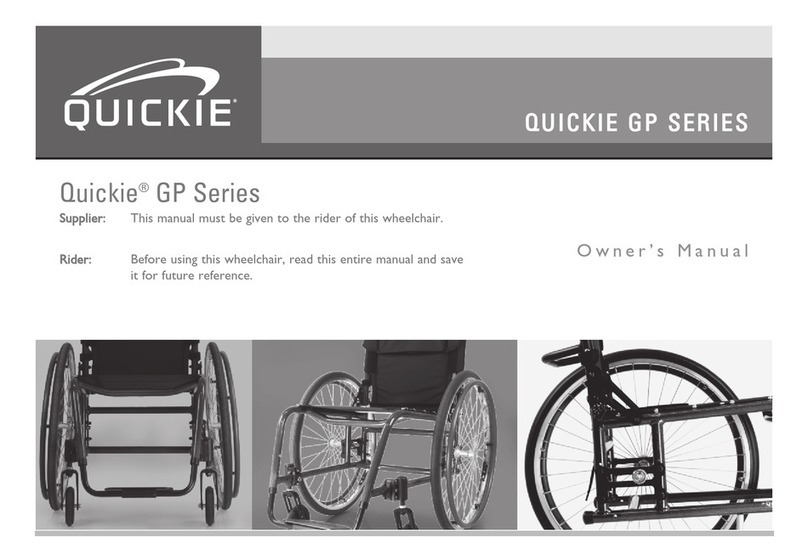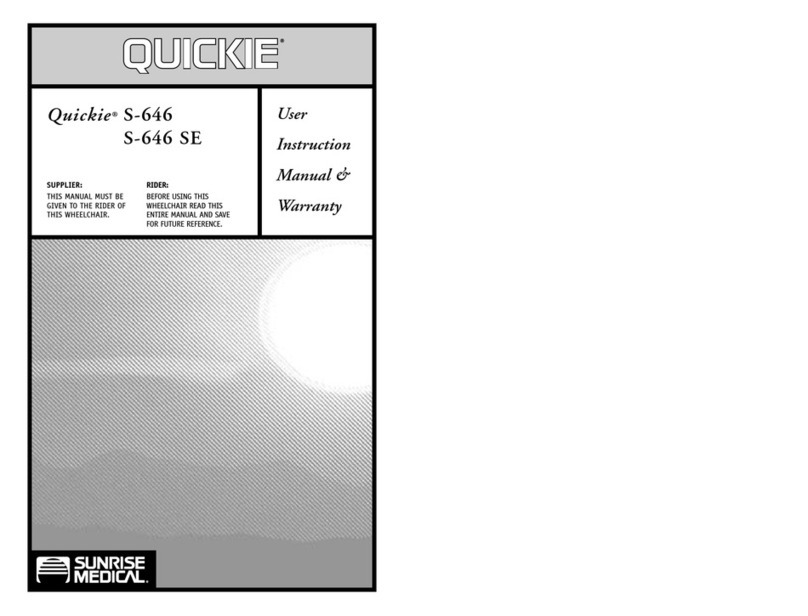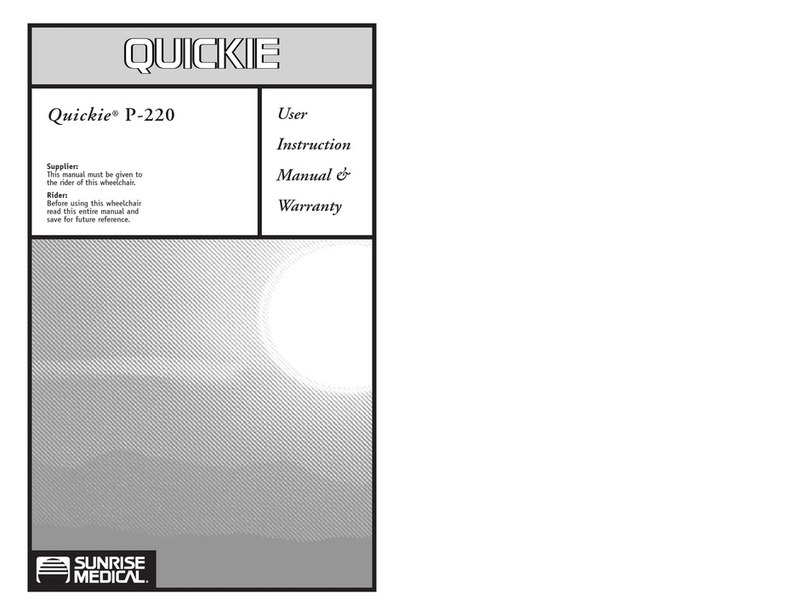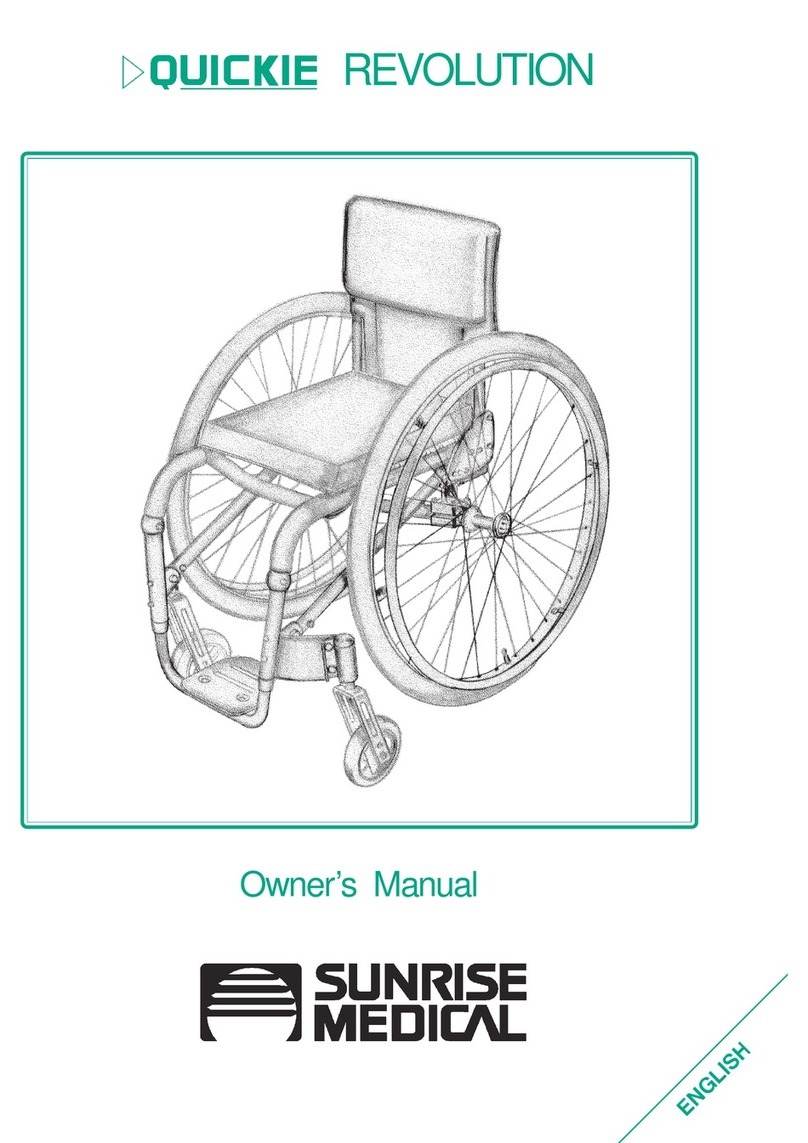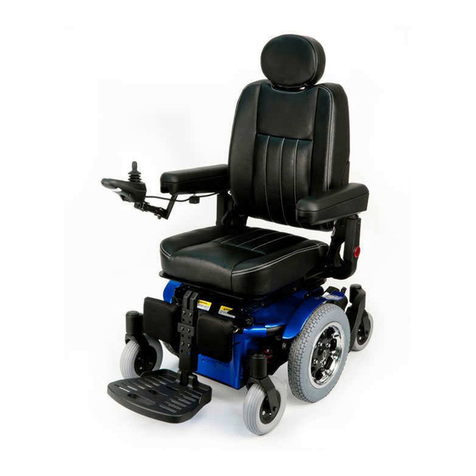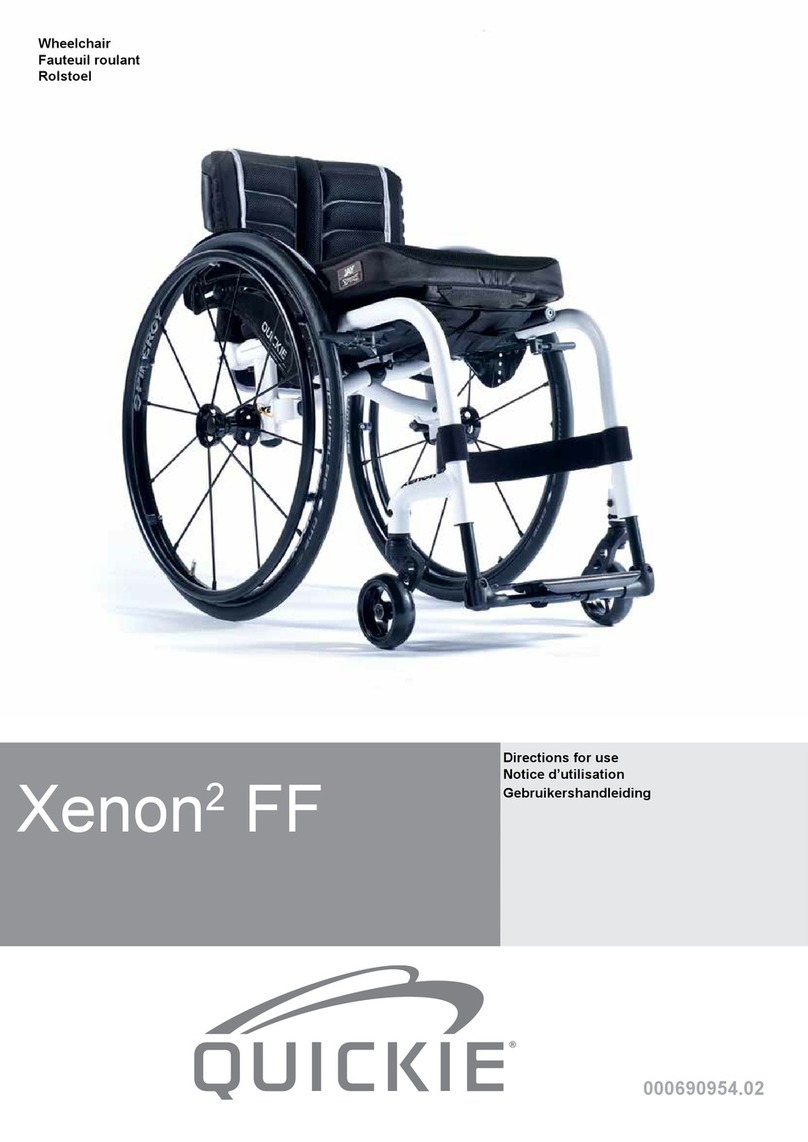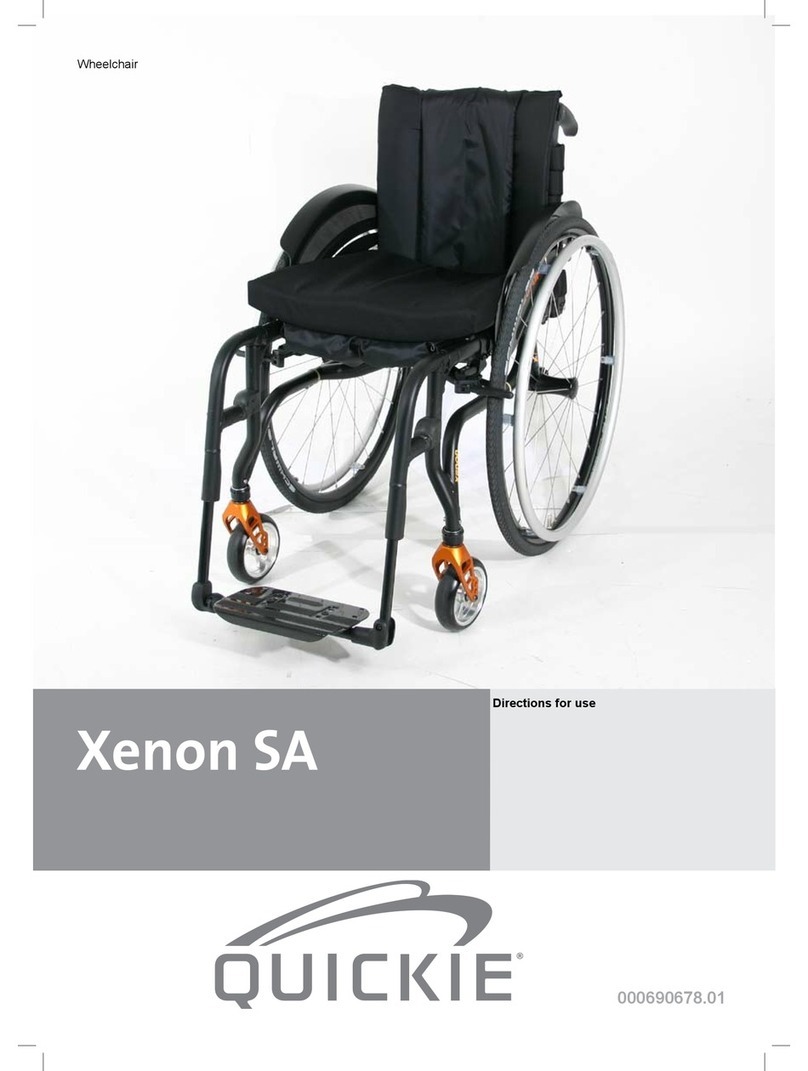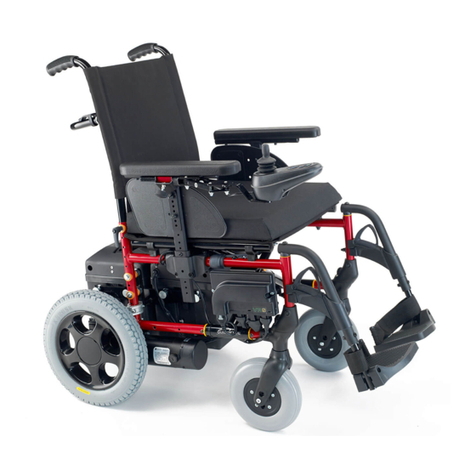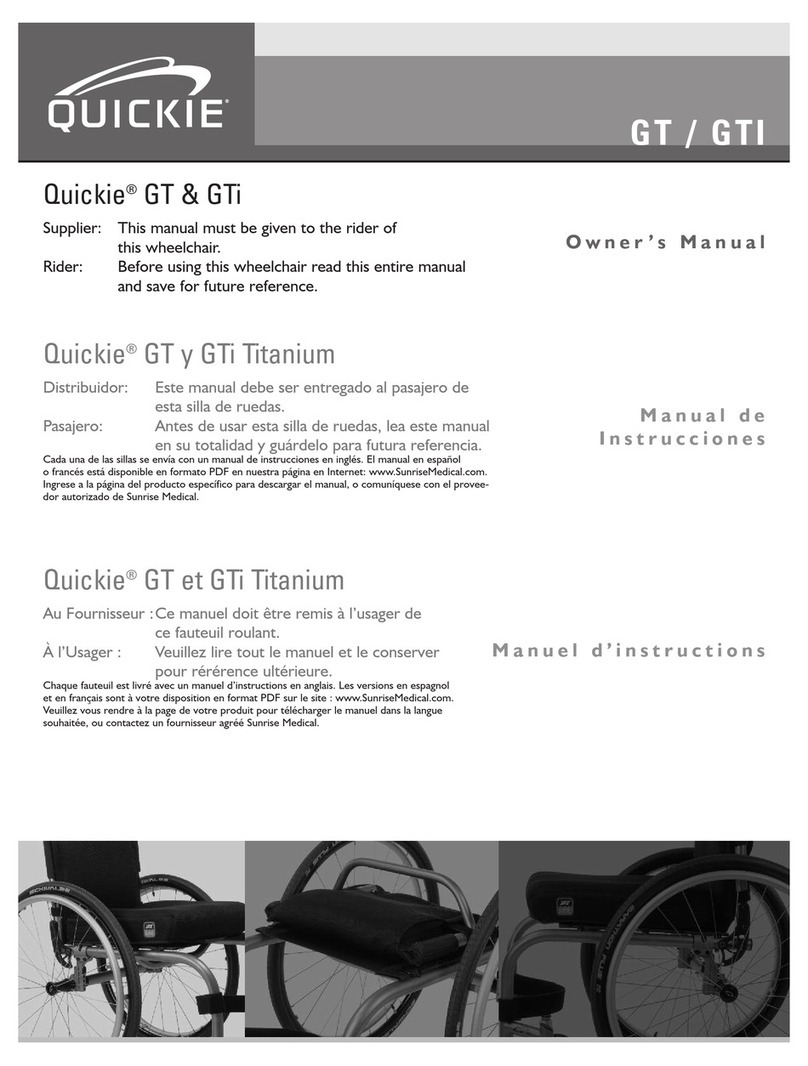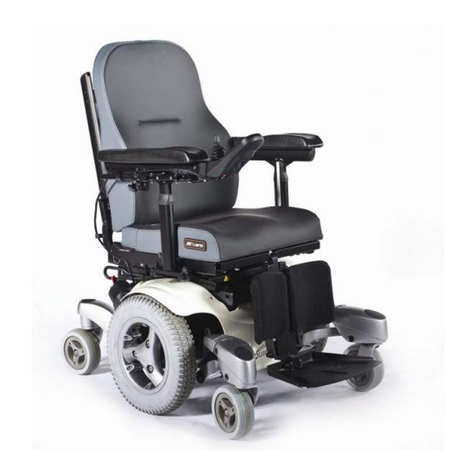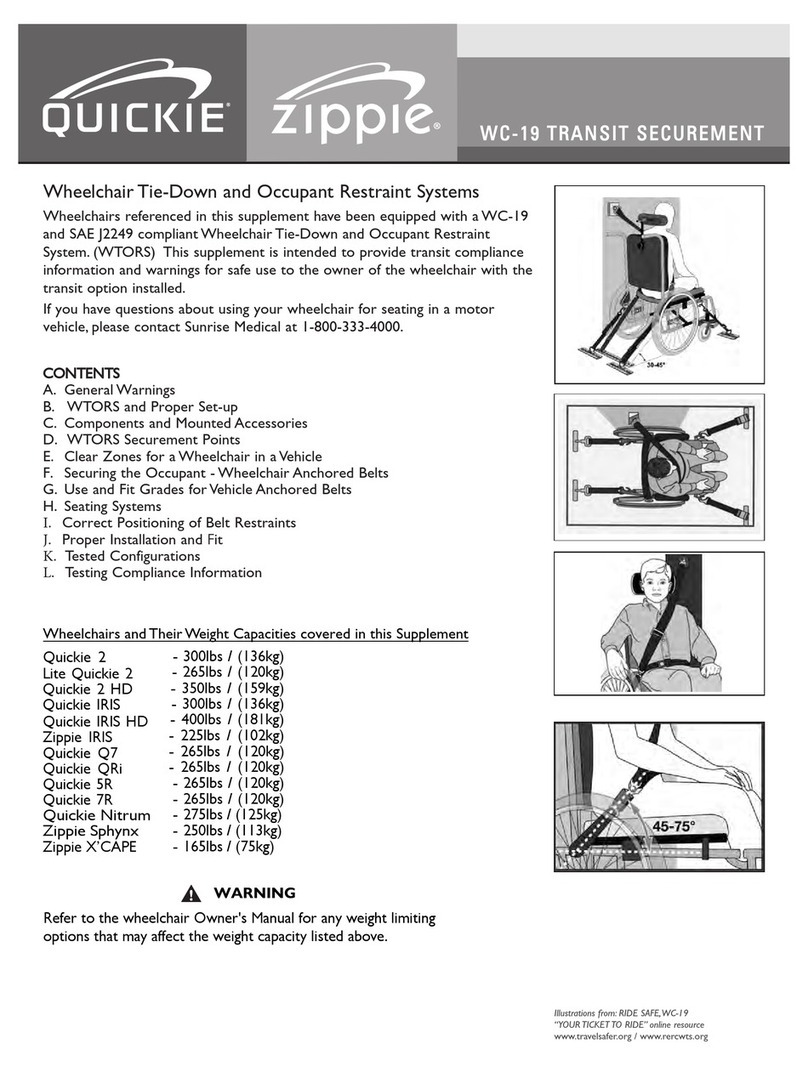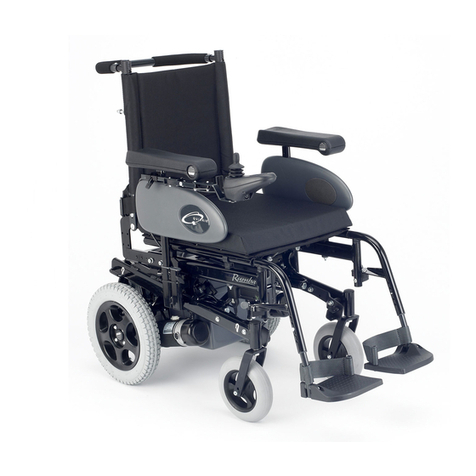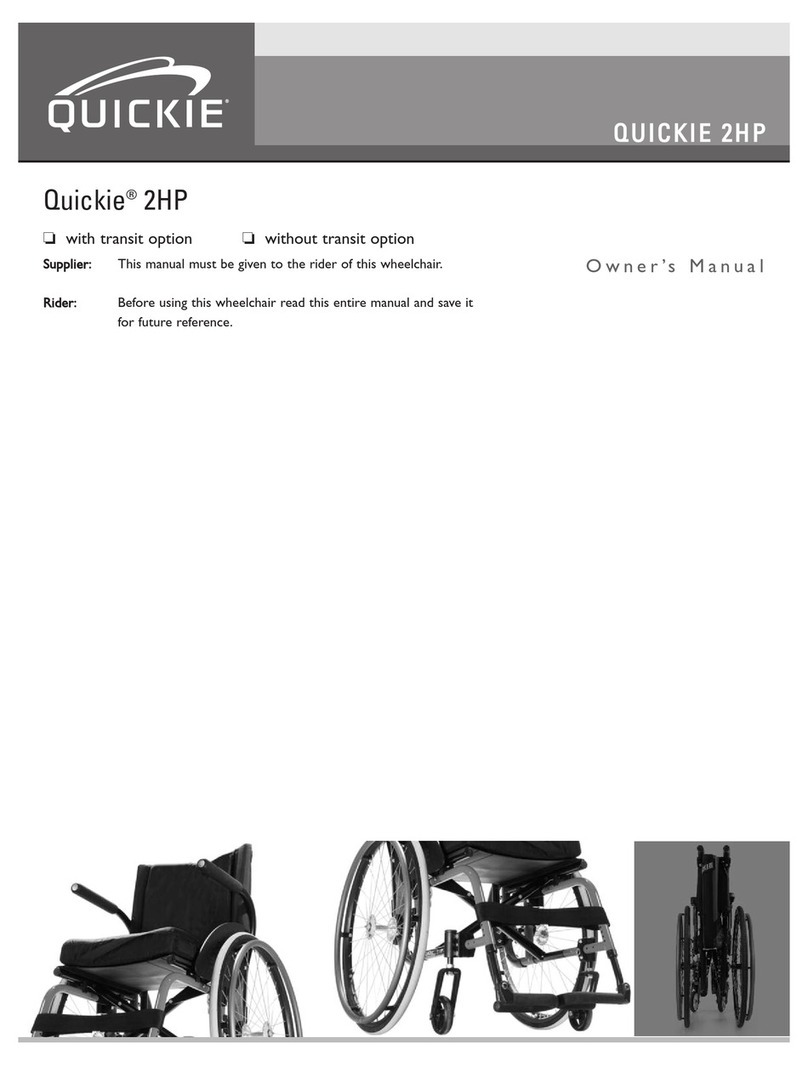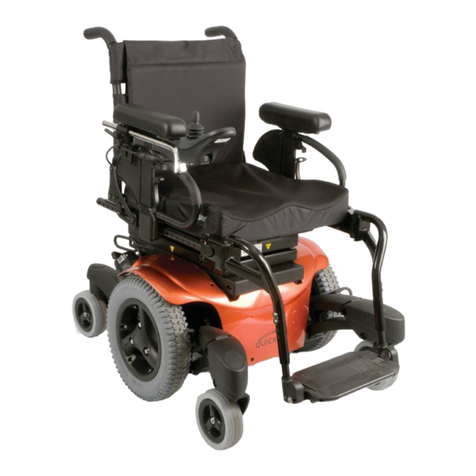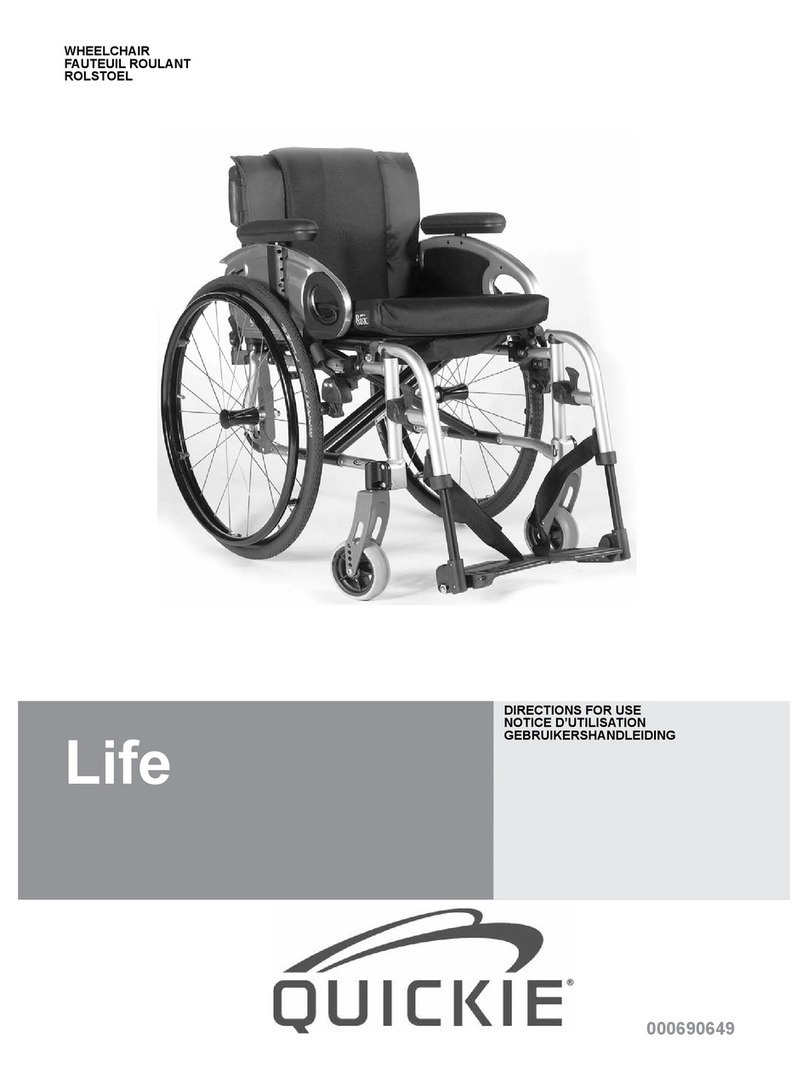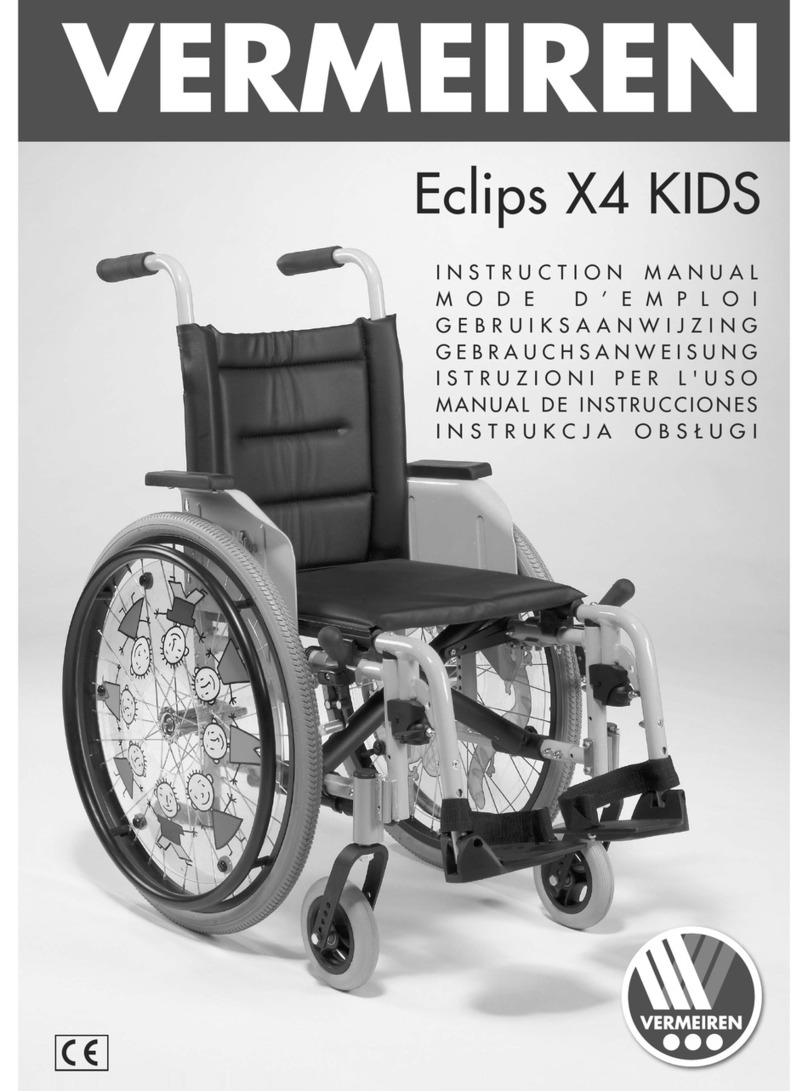SALSA M2 Mini 3
Rev.1.0
1.0 Your Wheelchair 5
2.0 How to use this manual 5
2.1 Introduction 5
2.2 Guarantee 5
2.3 Warranty conditions 5
3.0 Label Explantation / Word definitions 6
3.1 Definitions of words used in this manual 6
4.0 General safety warning and user tips 9
4.1 General warnings 9
4.2 Features and options 9
4.3 Kerbs 9
4.4 Routine service 9
4.5 Brake release 9
4.6 EMC - Radio transmitting devices. 10
4.7 Emergency braking 10
4.8 Sharp turns 10
4.9 Batteries 10
4.10 Tyres 10
4.11 Weight limit 11
4.12 Wheelchair motors 11
4.13 Hot surfaces 11
4.14 Wheelchair range 11
4.15 Road use 11
4.16 Adverse conditions 12
4.17 Ramps 12
4.18 Transfer to and from the wheelchair 12
4.19 Lift and tilt modules 12
4.21 Use on a slope 13
4.22 Using a vehicle mounted passenger lift 13
4.23 Creep mode 14
4.24 Stability of your wheelchair 14
4.25 Wheels 14
4.26 Rear view mirror 15
4.27 Crutch holder 15
4.28 Lights and indicators 15
4.29 Swing away tray 15
4.30 Mounting a kerb or step 15
4.31 Lap belt (Standard Seat) 16
4.32 VR2 Controller (Fig. 4.21) 18
5.0 Preparing your wheelchair for use 18
5.1 Handling the wheelchair 18
5.2 Preparation for transportation or storage 18
5.3 Re-Assembling 19
5.4 Brake release 19
5.5 Drive wheel suspension Salsa 20
5.6 Control joystick unit position 21
5.7 Getting ready to drive. (Fig.5.17). 21
5.8 Armrests 22
5.9 Leg Rests 26
6.0 Seating 31
6.1 Firm seat board 31
6.2 Seat cushions 31
6.3 Removable seat covers 31
6.4 Backrest upholstery 31
6.5 JAY backrests 31
6.6 Standard Seat width adjustment 31
6.7 Standard Seat height adjustment 32
6.8 Standard Seat Depth Adjustment 32
6.9 Backrest Angle Adjustment 33
6.10 Back Height Adjustment 34
6.11 Manual adjustable backrest (Standard seat) 36
6.12 Manual setting of the seat angle. 36
6.13 JAY backrests 37
6.14 Headrest 37
6.15 Powered Seating 38
7.0 Control System 40
7.0 R-net control system information 40
7.1 VR2 control system information 40
7.2 R2-L, (Lights). 42
7.3 VR2 Dual control unit 43
8.0 Troubleshooting using VR2 Hand Control 45
9.0 Controller Mounts 47
9.1 General warnings: 47
9.2 Attendant control: 47
9.3 Parallel swing-away control: 47
9.4 Centre bar mount control (R-net) 48
9.5 Tray mount control (R-net) 48
9.6 Swing-away tray mounted centre control (R-net) 48
9.7 Forus control (R-net) 48
9.8 Emergency stop button 49
9.9 Powered swing away arm (R-net) 49
10.0 Speciality Controls 50
10.1 Proximity head array 50
10.2 Driving with the head array (Fig 10.1) 50
10.3 Proportional head control 50
10.4 Sip and puff control and buddy buttons 51
10.5 Switch-It mini joystick as a chin control or hand control 51
10.6 Proportional chin control (Fig.10.7) 51
10.7 Micro pilot Joystick 51
11.0 Batteries and charging 52
11.1 Batteries, (Fig. 11.1 - 11.4) 52
11.2 Safety cut-outs 53
11.3 General battery information 53
11.4 Maintenance free batteries 53
11.5 Battery care 53
11.6 Maintenance free battery care plan 53
11.7 General charger information 54
11.8 Charger safety features 54
11.9 Connecting the charger and charging 54
11.10 Charger safety and caution notes 54
11.11 The range of your vehicle 55
11.12 Common battery statements 55
11.13 Battery warranty 56
12.0 Transportation 57
12.1 Transportation warnings: 57
12.2 Occupant restraint instructions 58
12.3 Crash testing on the SALSA, all models. 59
12.4 The tie down label and placement 59
12.5 Securing the wheelchair into the vehicle 60
12.6 Hoisting the wheelchair: 60
12.7 Wheelchairs and train travel within the EU: 60
12.8 Other Transport requirements: 61
12.9 Storage Spec removal of parts before travelling: 61
12.10 Medium to long term storage: 61
12.11 Storage temperature & humidity: 61
13.0 Maintenance and Cleaning 62
13.1 Tyre maintenance and pressures 62
13.2 Tyre wear 62
13.3 Drive wheel tyre repair 62
13.4 Removing the castor wheel 64
13.6 Inspection of the upholstery/seating 65
13.7 Cleaning seating 65
13.8 Cleaning controls 66
13.9 Lighting maintenance 66
13.10 Electrical connections 66
13.11 How to connect the cables to the batteries 66
13.12 Controller access 68
13.13 Storage 68
13.14 Authorised Sunrise Medical service agents 68
13.15 Recommended maintenance routines 69
13.16 Performance checks 70
14.0 Specification sheets (EN 12184 & ISO 7176-15) 71
15.0 Service History 72
16.0 Disposal 73
17.0 Battery Wiring Diagram 74
